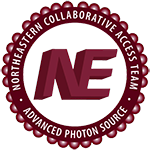Dynamic Conformational States Dictate Selectivity toward the Native Substrate in a Substrate-Permissive Acyltransferase.
Publication Type:
Journal ArticleSource:
Biochemistry, Volume 55, Issue 45, p.6314-6326 (2016)Keywords:
Acyltransferases, Amino Acid Sequence, Arabidopsis Proteins, Binding Sites, Biocatalysis, Catalytic Domain, Crystallography, X-Ray, Hydrogen Bonding, Kinetics, Molecular Dynamics Simulation, Mutation, Protein Conformation, Sequence Homology, Amino Acid, Shikimic Acid, Static Electricity, Substrate SpecificityAbstract:
<p>Hydroxycinnamoyl-CoA:shikimate hydroxycinnamoyltransferase (HCT) is an essential acyltransferase that mediates flux through plant phenylpropanoid metabolism by catalyzing a reaction between p-coumaroyl-CoA and shikimate, yet it also exhibits broad substrate permissiveness in vitro. How do enzymes like HCT avoid functional derailment by cellular metabolites that qualify as non-native substrates? Here, we combine X-ray crystallography and molecular dynamics to reveal distinct dynamic modes of HCT under native and non-native catalysis. We find that essential electrostatic and hydrogen-bonding interactions between the ligand and active site residues, permitted by active site plasticity, are elicited more effectively by shikimate than by other non-native substrates. This work provides a structural basis for how dynamic conformational states of HCT favor native over non-native catalysis by reducing the number of futile encounters between the enzyme and shikimate.</p>
